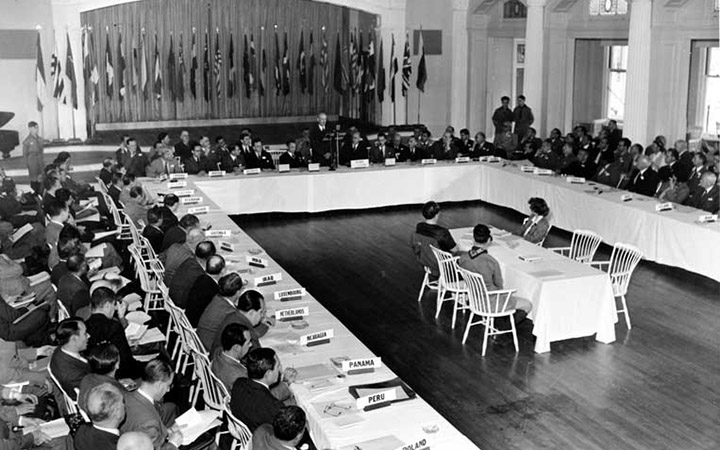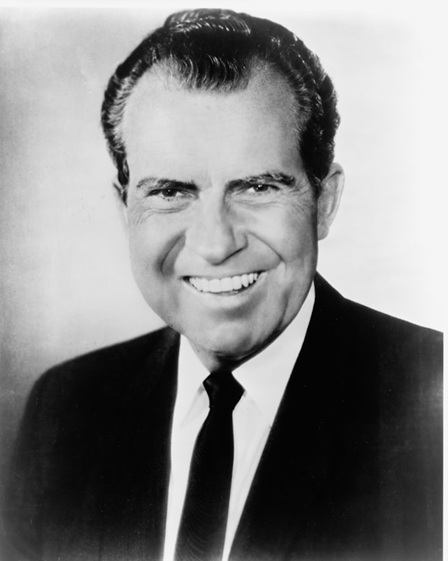
The Last Straw — and the Remedy: How the End of Bretton Woods Made Fiat Fragile — and Why a Civic Crypto Like GoudDi Is the Medicine We Need
Introduction
Lede — A short, sharp truth: On August 15, 1971 a political decision in Washington loosened the last formal tether between currencies and gold. That decision did not alone “break the world” — but it unlocked a shift that made modern fiat systems far more flexible and far more exposed to extraction, speculation, and engineered inequality. This fragility is what GOLDA aims to fix with GoudDi: civic money designed to protect communities, not extract them.
1 — A short, sourced history
Bretton Woods (July 1944) created a rules-based system after WWII: most currencies were pegged to the U.S. dollar, and the dollar was convertible into gold at a fixed price. That system lasted through the 1950s and 1960s and underpinned a long post-war expansion.
On August 15, 1971, the U.S. suspended dollar convertibility to gold. Attempts to patch the system failed and by 1973 many currencies floated. By 1976 the Jamaica Accords formalized the new reality. The shift gave governments more domestic monetary flexibility but also exposed them to global capital flows, speculation, and new political-economic constraints.

Figure 1: Bretton Woods Photo by U.N. Monetary Conference (Photo: Associated Press; Photographer: Abe Fox).
2 — The modern problem in one paragraph
When money is both programmable and effectively opaque politically, three things can converge: powerful actors extract value across borders, short-term capital disciplines long-term civic policy, and citizens lose trust in public institutions. These dynamics amplify inequality and hollow out democratic sovereignty — exactly the gap we measure with the PPAI (Public–Personal Alignment Index).
2.1 — Extraction unleashed: the elephant in the porcelain shop
We must be blunt: the extractive system that grew up around modern finance has not merely privileged a few players — it has become structural and, in many places, out of control. Think of global finance as an elephant let loose in the world’s most delicate store: everything valuable it touches is at risk. This is not metaphorical hand-wringing — it is a description of mechanisms that concentrate wealth, evade accountability, and turn public resources into private claims.
How extraction got so big:
- Financialization of everyday life. Credit, derivatives, and securitization turned social goods (housing, education, infrastructure revenue) into assets to be sliced, traded, and arbitraged.
- Cross-border opacity. Tax havens, shell companies, and opaque ownership chains let capital vanish from public sight and public tax rolls.
- Debt leverage and predatory claims. Sovereigns, municipalities and households can be trapped in cycles of debt that create recurring private returns at public expense.
- New rent channels. Private equity buyouts, fee-based platforms and complex instruments capture recurring public flows (fees, tolls, interest) instead of producing new public value.
- Regulatory capture + speed. Fast-moving capital and lobbying power outpace the slow logic of public accountability, making capture profitable and reforms slow.
This structural extraction squeezes policy space, hollows public budgets, accelerates inequality and erodes trust. That is the force GoudDi must be built to resist — not by moralizing, but by changing incentives and plumbing.
Extraction Index (sidebar)
Extraction Index (0–100) — higher = more extraction risk
Components (score 0–100, weighted):
- Capital Flight / Offshoring Risk — 25
- Rent Concentration (share of public cashflows captured by private actors) — 25
- Opacity & Beneficial Ownership — 20
- Financial Leverage & Debt Pressure — 20
- Regulatory Capture / Enforcement Gap — 10
Formula: Extraction Index = (25*CF + 25*RC + 20*OP + 20*LEV + 10*RCAP) / 100
Worked example: CF=70, RC=80, OP=85, LEV=75, RCAP=65 → Extraction Index = 76 (High)
Use: Link the Extraction Index to PPAI thresholds; exceedance should trigger governance responses (emergency audits, issuance freezes, reserve checks, clawbacks).
3 — Why a civic crypto is the right remedy
Digital money isn’t the problem — design is. A civic crypto can combine three advantages when intentionally architected:
- Programmability — encode issuance rules, vesting, clawbacks, and caps directly in contracts.
- Transparency — public ledgers and audits let citizens verify flows.
- Governance mechanics — mission locks, multi-stakeholder boards, diaspora seats and legal charters make mission drift costly.
The IMF and global policy discussions show that digital public money can improve inclusion — but outcomes depend entirely on design and governance.

Figure 2: US President Richard Nixon Photo by Library of Congress on Unsplash
4 — GoudDi: core design principles (practical)
Here are the enforceable elements we will embed in GoudDi:
- Mission lock + governance. Immutable charter language and supermajority change rules; seats for citizens, diaspora, civil society, technologists, and independent auditors.
- Issuance rules. Public issuance schedules tied to measurable civic outcomes (UBI, infrastructure escrows), not ad-hoc fiscal gaps.
- Hybrid reserve/backing strategy. Conservative basket (strategic grants, reparations flows, low-risk assets) plus algorithmic stabilization rules for day-to-day stability.
- Anti-extraction mechanics. Cycle caps (the 999:1 spirit within distribution cycles), vesting, clawbacks, and time-locks for large releases.
- Two-layer rails. A low-friction civic rail (offline capable wallets, remittance channels) plus a permissioned commercial rail for merchant settlement and interoperability.
- Civic dashboards. Publish PPAI, issuance ledgers, and third-party audit reports publicly.
5 — What GoudDi could deliver
- Immediate: low-cost diaspora remittances, basic wallet + offline modes, pilot UBI/clearing for civic works.
- Short term: merchant integration, civic contracts (pay-for-outcome escrows), and municipal pilots.
- Medium term: adoption as a parallel civic medium of exchange, transparent reserves, and a replicable model for reparations and community resilience.
6 — Risks and guardrails
- Credibility risk: poorly communicated issuance or weak backing undermines confidence. Guardrail: strict, auditable issuance rules and conservative pilots.
- Political capture: guardrail: legal mission locks, diverse governance, rotating diaspora representation.
- External pressures: reserve-currency politics and capital flows remain; guardrail: prudent reserve management and regional partnerships.
7 — A short FAQ (likely skeptic questions)
Q: Isn’t this just another token that will be gamed?
A: Not if legal mission locks, multi-stakeholder governance, transparent issuance, and audited technical controls are first-class.
Q: Won’t markets crush a small civic currency?
A: Reserve politics are real — that’s why GoudDi favors conservative reserves, phased pilots, diaspora bridges, and pragmatic interoperability with stable rails.
Q: Is this a technological utopia?
A: No. It’s a design problem: align incentives, make extraction expensive, and make civic value measurable and rewarded.
Conclusion
Money is the first-order lever of social power. If extraction behaves like an elephant in the shop, our response must be architectural and surgical: design money so that extraction is visible, costly, and slow. That is the point of GoudDi’s anti-extraction mechanics — mission locks, cycle caps, on-chain transparency, vesting and clawbacks — combined with public dashboards and enforceable legal guardrails. We don’t need moralizing slogans; we need rules, engineering, and accountable institutions that make extraction economically unattractive and politically costly.
© 2025 GOLDA (Golda-Global Inc.). Article drafted by Boh IO; edited and published by Don Clermont. For permissions or reuse: contact@golda.global
Support the Civic Transformation
If this content provided value, consider supporting our mission to build the Free World transformation.
Support the Mission